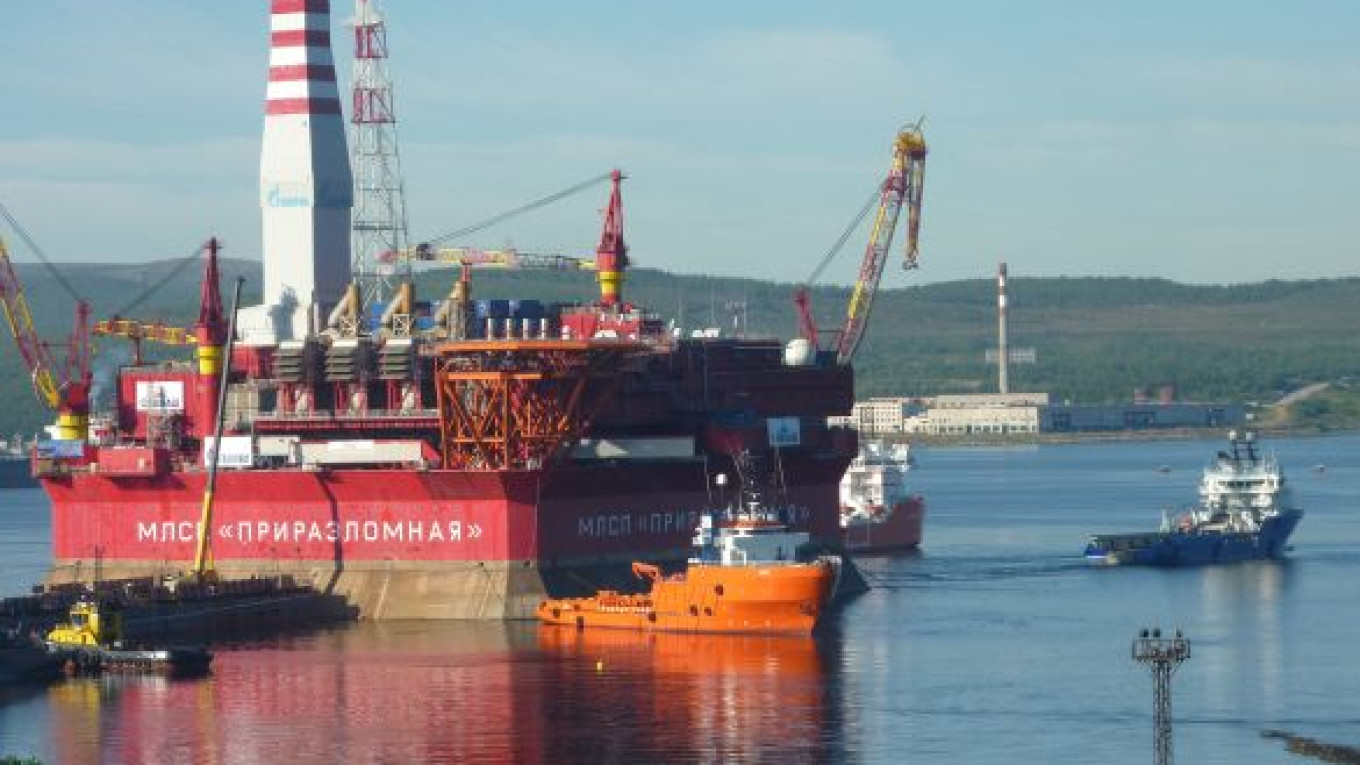ABOARD THE ARCTIC SUNRISE, Pechora Sea — Kumi Naido, executive director of Greenpeace International, will be in Moscow on Monday to spearhead a campaign against Russia’s drive for oil and gas production on the Arctic Shelf.
During a two-day visit, he will join a news conference to present research commissioned by Greenpeace and the World Wildlife Fund modeling the impact of a potential oil spill at the Prirazlomnaya oil platform in the Pechora Sea.
Naido may meet with “senior government figures,” possibly including President Vladimir Putin, to discuss concerns about Arctic development, Yevgenia Belyakova, coordinator of Greenpeace Russia’s Arctic program, said Friday.
On Friday, the Prirazlomnaya platform “categorically refused” a request by a Greenpeace vessel to board the platform and meet with workers there.
Sergei Kostromskoi, the rig’s captain, also politely but firmly declined a request to enter the three-mile safety exclusion zone around the platform.
“We have a three-mile safety zone around the rig, according to international maritime law. That zone is closed to all vessels, so we cannot grant you permission to come any closer,” he said by radio.
He referred all questions about the operational and day-to-day life of the rig to Gazprom’s press office in Moscow, which declined e-mailed requests for permission to interview the captain.
When the Arctic Sunrise approached in choppy seas and drizzly weather Friday morning, the rig, about 70 nautical miles south of Novaya Zemlya, was attended by two vessels — the Vladislav Strizhkov, the platform’s red-hulled 99-meter support vessel, and the Anna Akhmatova, a passenger vessel presumably carrying crew and supplies to and from the rig.
From three nautical miles, the Prirazlomnaya gas platform looks much as it does in Gazprom’s press photos: red and white with a gray concrete base and shiny new paint.
There is still no flame at the top of the flaring tower and little evidence that the rig has already begun exploratory drilling, which was due to commence sometime this summer.
The ladder lost during a storm while the rig was being towed into position last summer seems to have been replaced. Two large metal stairwells appear to descend from two opposite sides of the square platform for embarkation onto boats.
The loss of the ladder, which was filmed by a crew member and later appeared on the Internet, was seized on by critics as evidence that the platform was ill-constructed for Arctic conditions.
Greenpeace, which is campaigning for a global ban on oil and gas exploration in the Arctic, plans to continue monitoring the area by satellite beginning early next year in a bid to catch any oil spills in the remote area.
A Message from The Moscow Times:
Dear readers,
We are facing unprecedented challenges. Russia's Prosecutor General's Office has designated The Moscow Times as an "undesirable" organization, criminalizing our work and putting our staff at risk of prosecution. This follows our earlier unjust labeling as a "foreign agent."
These actions are direct attempts to silence independent journalism in Russia. The authorities claim our work "discredits the decisions of the Russian leadership." We see things differently: we strive to provide accurate, unbiased reporting on Russia.
We, the journalists of The Moscow Times, refuse to be silenced. But to continue our work, we need your help.
Your support, no matter how small, makes a world of difference. If you can, please support us monthly starting from just $2. It's quick to set up, and every contribution makes a significant impact.
By supporting The Moscow Times, you're defending open, independent journalism in the face of repression. Thank you for standing with us.
Remind me later.


